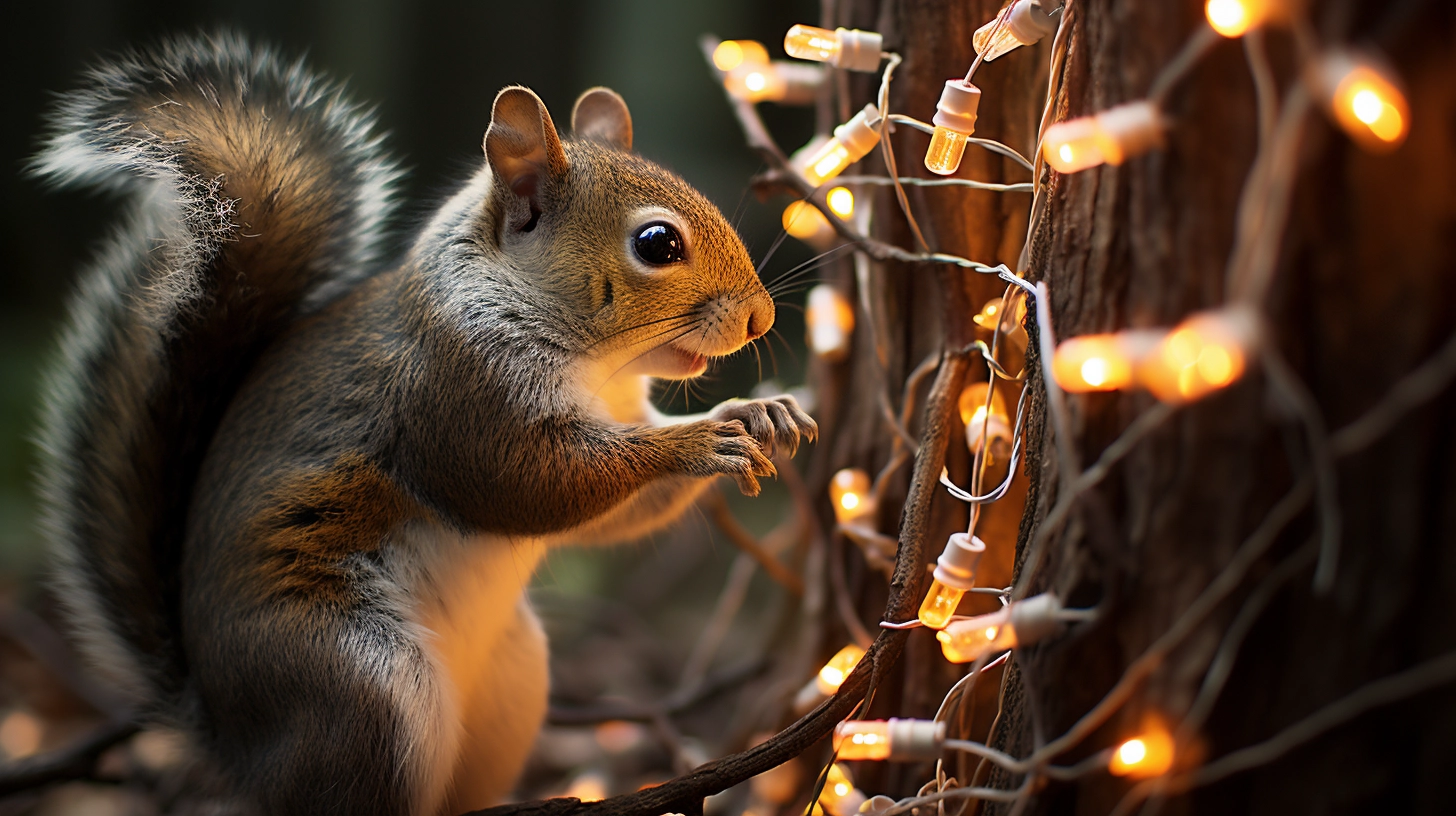Keeping squirrels from chewing on your Christmas lights involves a mix of preventive measures and deterrents. The key is to make the lights less appealing or accessible to these agile creatures. Read on to discover practical, humane strategies that can protect your festive display from these persistent nibblers without harming them.
How to Squirrel Proof Christmas Lights
These methods focus on deterring squirrels from accessing or damaging the lights without harming the animals.
1. Physical Barriers
- Conduit or Protective Casing: Encase the light strings in a plastic or metal conduit. This serves as a physical barrier, making it difficult for squirrels to chew through.
- Wire Guards: Specialized wire guards can be wrapped around the cords. These are often made from tough materials that are resistant to gnawing.
- Secure Mounting: Securely mount lights on surfaces where squirrels are less likely to reach. For example, attaching lights tightly against the house or on metal poles can deter squirrels.
2. Repellents
- Natural Repellents: Use natural repellents like capsaicin (the spicy component in chili peppers), peppermint oil, or predator urine (available in garden stores). These can be applied around the areas where lights are installed. Reapplication is necessary, especially after rain.
- Commercial Repellents: There are also various commercial repellents specifically designed to deter squirrels. Ensure they are safe for use around pets and children.
- Motion-Activated Sprinklers: These can startle and deter squirrels when they approach your Christmas lights. They can be a non-harmful way to keep squirrels at bay.
3. Safe Placement
- Elevate Lights: Place lights higher up where squirrels are less likely to reach. Using ladders or long poles for installation can help achieve this.
- Avoid Trees and Bushes: Avoid draping lights on trees and bushes where squirrels commonly roam. Instead, focus on areas like eaves, windows, or standalone structures.
4. Creating Diversions
- Feeding Stations: Set up feeding stations away from the lights to divert squirrels’ attention. Providing nuts or seeds can keep them occupied and away from your decorations.
- Squirrel Deterrent Plants: Plant or place pots of squirrel-deterring plants (like daffodils or allium) near your light display areas.
5. Regular Inspections and Adjustments
- Routine Checks: Regularly inspect your Christmas lights for any signs of damage or tampering by squirrels.
- Adjust Strategies as Needed: If you notice squirrels are overcoming a particular strategy, be ready to adapt and try alternative methods.
Why Do Squirrels Chew Wires
Squirrels instinctively chew on objects to maintain their constantly growing incisors and satisfy their curiosity. This natural behavior often leads them to target Christmas lights, which are appealing due to their accessible wires and interesting textures.
Their curiosity drives them to explore and potentially chew on new items in their environment, including electrical wiring in lights, possibly attracted by the faint buzzing sound or electromagnetic fields. The resultant damage is not only a nuisance but poses significant safety hazards like electrical shorts and potential fires, alongside the inconvenience and cost of frequent light replacements.
Additionally, during the holiday season, when natural food sources are scarcer, squirrels may be more inclined to investigate and potentially damage human-made objects like Christmas decorations as they search for food or nesting materials.



